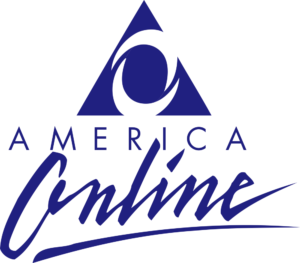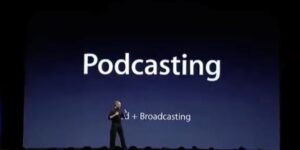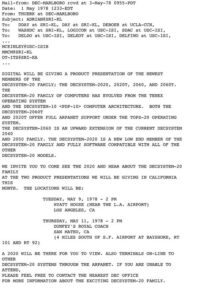The Internet
🥳 Happy World Emoji Day! 🌎🎉📅
July 17, 2014
Jeremy Burge, founder of Emojipedia, creates World Emoji Day, a celebration of emojis, the now ubiquitous icons we use in text communication to visually represent emotional cues. Burge chose the date of July 17th because Apple’s emoji for calendar displays July 17, in reference to the date that Steve Jobs originally introduced Apple’s iCal software.
World Emoji Day has become so popular that it has influenced the design of the calendar emoji on other platforms. Originally, companies other than Apple used a variety of dates on their calendar emoji. As World Emoji Day grew in popularity, the various dates caused confusion. So as of the writing this article in 2023, most major platforms now display July 17 on their calendar emoji. Microsoft and Facebook being notable exceptions 📅🙄
Code Red Worms its Way into the Internet
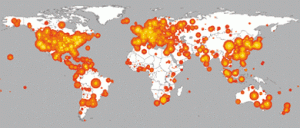
The Code Red worm is released onto the Internet. Targeting Microsoft’s IIS web server, Code Red had a significant effect on the Internet due to the speed and efficiency of its spread. Much of this was due to the fact that IIS was often enabled by default on many installations of Windows NT and Windows 2000. However, Code Red also affected many other systems with web servers, mostly by way of side-effect, exacerbating the overall impact of the worm, ensuring its place in history among the many malware outbreaks infecting Windows systems in the late 1990’s and early 2000’s.
AOL Settles Lawsuit on Billing Practices
America Online settles 11 class action lawsuits alleging misleading billing practices. Among the claims raised against AOL were that customers were not aware that charges were rounded up to the next full minute, that 15 seconds were added to each session for “connection time”, and occasionally billing customers for time in “free areas”. AOL continued to charge by the hour until December of that year, switching to a flat monthly rate of $19.95. Who here remembers that point in time when this pricing change caused AOL to have such a huge spike in new users that for a time it was almost impossible to connect to AOL due to the busy signals!
AOL was a major driver of the growth of Internet usage in the 1990’s as their blanket marketing campaign of distributing free trial disks was the introduction for many people to the nascent global network. It is reported that at one point in the 1990s, half of all CDs pressed were AOL installers. To illustrate AOL’s growth, and by proxy users accessing the Internet, from 200,000 subscribers in 1993 when AOL first offered Internet access, AOL had grown to 1 million subscribers in 1994, 4 million in 1995, 8 million in 1996, 10 million in 1999, and through continued growth by marketing and acquisitions of other online services such as Compuserve, 23 million subscribers in the year 2000 where they made over $4 billion in subscription fees. In 2001 AOL made the biggest merger in history at the time with Time Warner and in 2002 reached over 26 million users before the emergence of broadband DSL and cable Internet services began the slow decline of the once-dominant company.
World, Meet the Internet
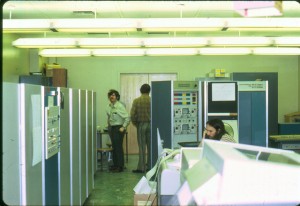 July 3, 1969
July 3, 1969
UCLA issues a press release stating that it “will become the first station in a nationwide computer network which, for the first time, will link together computers of different makes and using different machine languages into one time-sharing system.” It went on to say that “Creation of the network represents a major forward step in computer technology and may server as the forerunner of large computer networks of the future.”
How right they were! Of course, this was the first step in creating what became known as the Internet. The first transmission on that newly created internet wasn’t actually sent until October 29th.
I could only find the text of the press release from the above link, which is a scan from a book. So I took the liberty of transcribing it using Siri along with a little manual editing. The text of the UCLA press release dated July 3rd, 1969 follows:
UCLA will become the first station in a nationwide computer network which, for the first time, will link together computers of different makes and using different machine languages into one time-sharing system.
Creation of the network represents a major forward step in computer technology and may serve as the forerunner of large computer networks of the future.
The ambitious project is supported by the Defense Department’s Advanced Research Project Agency (ARPA), which has pioneered many advances in computer research, technology and applications during the past decade. The network project was proposed and is headed by ARPA’s Dr. Lawrence G. Roberts.
The system will, in effect, pool the computer power, programs and specialized know-how of about 15 computer research centers, stretching from UCLA to M.I.T. Other California network stations (or nodes) will be located at the Rand Corp. and System Development Corp., both of Santa Monica; the Santa Barbara and Berkeley campuses of the University of California; Stanford University and the Stanford Research Institute.
The first stage of the network will go into operation this fall as a subnet joining UCLA, Stanford Research Institute, UC Santa Barbara, and the University of Utah. The entire network is expected to be operational in late 1970.
Engineering professor Leonard Kleinrock, who heads the UCLA project, describes how the network might handle a sample problem:
Programmers at Computer A have a blurred photo which they want to bring into focus. Their program transmits the photo to Computer B, which specializes in computer graphics, and instructs B’s program to remove the blur and enhance the contrast. If B requires specialized computational assistance, it may call on Computer C for help.
The processed work is shuttled back and forth until B is satisfied with the photo, and then sends it back to Computer A. The messages, ranging across the country, can flash between computers in a matter of seconds, Dr. Kleinrock says.
UCLA’s part of the project will involve about 20 people, including some 15 graduate students. The group will play a key role as the official network measurement center, analyzing computer interaction and network behavior, comparing performance against anticipated results, and keeping a continuous check on the network’s effectiveness. For this job, UCLA will use a highly specialized computer, the Sigma 7, developed by Scientific Data Systems of Los Angeles.
Each computer in the network will be equipped with its own interface message processor (IMP) which will double as a sort of translator among the Babel of computer languages and as a message handler and router.
Computer networks are not an entirely new concept, notes Dr. Kleinrock. The SAGE radar defense system of the Fifties was one of the first, followed by the airlines’ SABRE reservation system. At the present time, the nation’s electronically switched telephone system is the world’s largest computer network.
However, all three are highly specialized and single-purpose systems, in contrast to the planned ARPA system which will link a wide assortment of different computers for a wide range of unclassified research functions.
“As of now, computer networks are still in their infancy,” says Dr. Kleinrock. “But as they grow up and become more sophisticated, we will probably see the spread of ‘computer utilities’, which, like present electronic and telephone utilities, will service individual homes and offices across the country.”
Apple Takes Podcasting Mainstream
Apple releases iTunes 4.9, the first version of iTunes to incorporate Podcast subscribing and listening. Podcasting was a growing phenomenon and Apple realized it could both help build the medium and also become the defacto Podcast standard by linking it to its incredibly popular iTunes and iPod platforms. On this date there were 3000 Podcasts available in the iTunes directory. Apple’s move paid off and as of 2021 there were over 2 million Podcasts listed in the Apple Podcast Directory. Apple’s Podcast platform is still considered the standard on which podcasters should publish their shows.
There was an up and coming Podcast directory named Odeo at the time. Given Apple’s move Odeo suddenly became irrelevant. However, the people behind the company shifted focus and soon created a new service called Twttr, soon to be renamed Twitter. Isn’t it so interesting the way technology history weaves itself?
DES Cracked
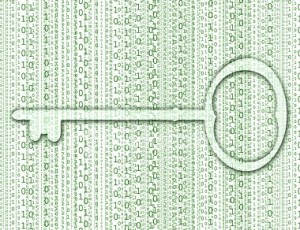
A group of users organized over the Internet cracked the Data Encryption Standard — the strongest legally exportable encryption software in the United States to that point — after only five months of work. The United States at the time banned the export of stronger encryption software out of fear that it would be used by terrorists, but companies designing the software claimed such restrictions were worthless because foreign countries offer much stronger programs. The US eventually relaxed certain restrictions but to this day still claims to exert authority over encryption technologies under the commerce clause.
The Day the Music Industry Changed Forever
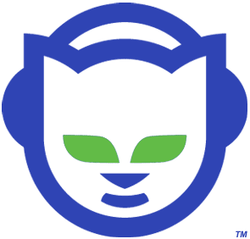
Shawn Fanning and Sean Parker release the filesharing service Napster. The service provides a simple way for users to copy and distribute MP3 music files. It becomes an instant hit, especially among college students. Just over 6 months later, on December 7, 1999, the Recording Industry Association of America (RIAA) will file a lawsuit against the service, alleging mass copyright infringement. Eventually this lawsuit will force the shutdown of the company on September 3, 2002, but not before the popularity of downloading digital music is firmly entrenched in a generation of Internet users.
GIF is Not Peanut Butter

CompuServe releases the Graphics Interchange Format (GIF) standard as a new computer graphics file format. Due to color limitations, the GIF format is unsuitable for reproducing color photographs, but it is well-suited for more simple images such as graphics or logos with solid areas of color. This made it probably the most popular graphics format for the early Internet, until the famous “GIF licensing controversy” soured many designers to its use. The PNG format was developed in response as an alternative to GIF to get around the licensing issues. However, all relevant patents have since expired and the GIF format may now be freely used. Today it still sees widespread use, especially when simple animations are needed.
The First Mass Unsolicited Commercial E-mail, i.e. Spam
Gary Thuerk, a marketing representative for Digital Equipment Corporation, sends out an e-mail promoting an open house for the company’s latest computer systems to 393 recipients on the ARPANET, a precursor to the modern Internet. While this number sounds small by today’s standards, this was all the ARPANET users on the west coast of the United States. Given that this was an unsolicited commercial e-mail, it is now considered the first of its kind. In other words, the first spam message well before the term was coined. It brought a quick and negative response from many users and Thuerk was warned by ARPANET administrators that mass mailings were not an acceptable use of the network. The backlash notwithstanding, the open house was largely successful with over $12 million dollars of DEC equipment being sold. I guess it was better to ask forgiveness than permission in this case!
World Wide Web Made Public Domain
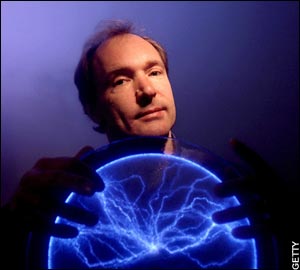
At the urging of Tim Berners-Lee, the creator of the World Wide Web protocol, the directors of CERN release the source code of World Wide Web into the public domain, making it freely available to anyone, without licensing fees. The decision to make the World Wide Web software and protocols freely available is considered by some as possibly the single most important moment in the history of the Internet. In fact, some historians mark this as the birth of the Web.


